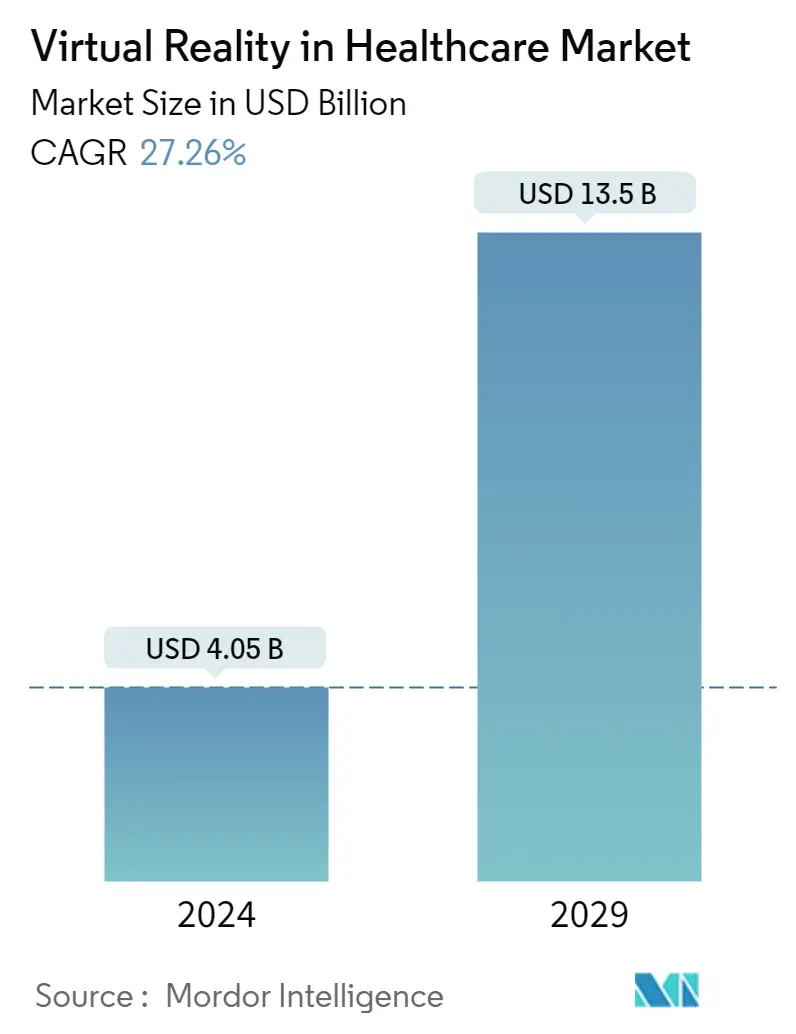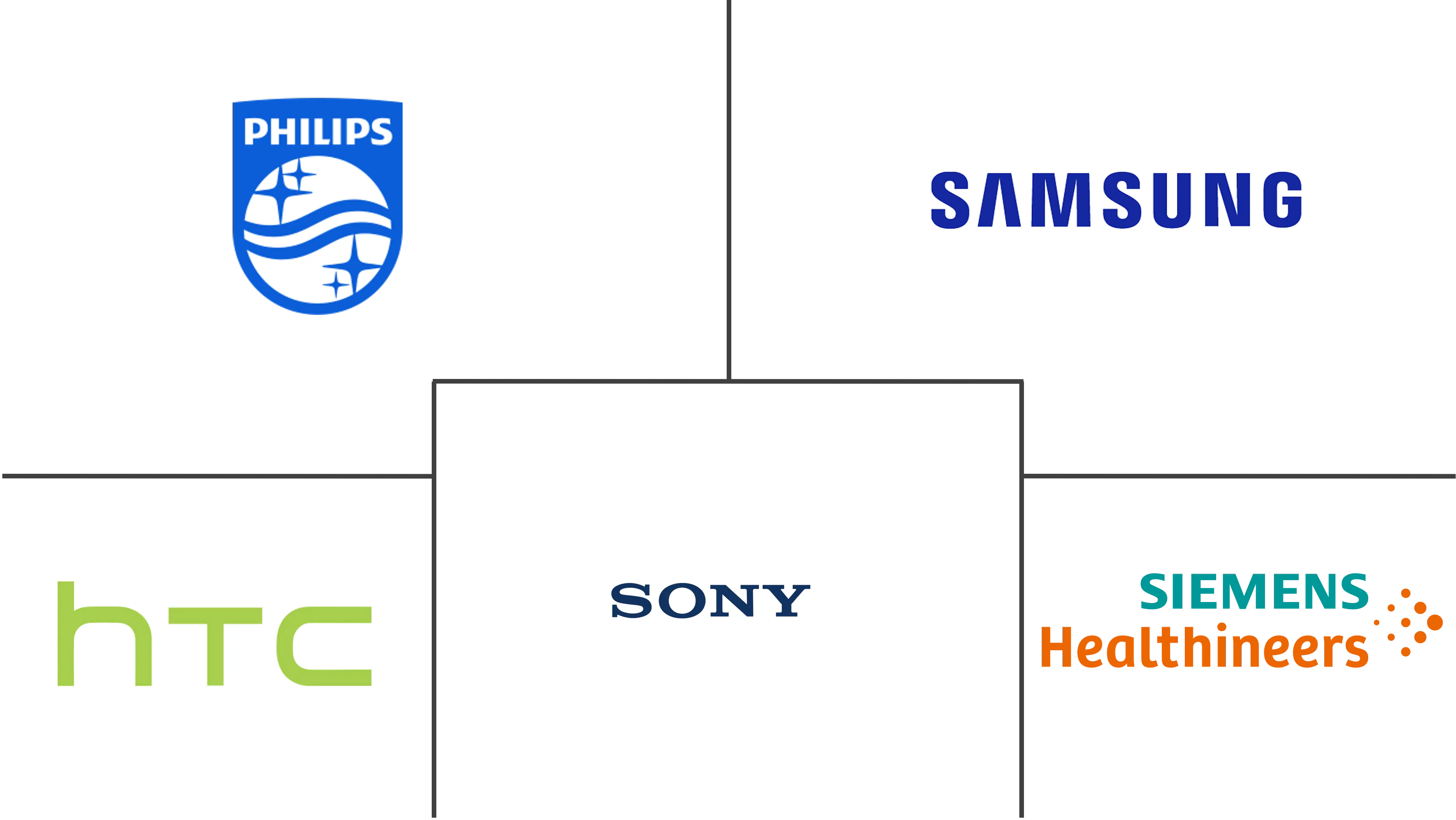Market Size of Virtual Reality in Healthcare Industry

| Study Period | 2019 - 2029 |
| Market Size (2024) | USD 4.05 Billion |
| Market Size (2029) | USD 13.50 Billion |
| CAGR (2024 - 2029) | 27.26 % |
| Fastest Growing Market | Asia-Pacific |
| Largest Market | North America |
Major Players
*Disclaimer: Major Players sorted in no particular order |
Need a report that reflects how COVID-19 has impacted this market and its growth?
Virtual Reality (VR) in Healthcare Market Analysis
The Virtual Reality in Healthcare Market size is estimated at USD 4.05 billion in 2024, and is expected to reach USD 13.5 billion by 2029, growing at a CAGR of 27.26% during the forecast period (2024-2029).
- During the COVID-19 pandemic, the need for virtual reality technologies in the healthcare business increased. The use of virtual reality in healthcare allowed medical personnel to better comprehend and study the impact of the new strain. Medical practitioners were aided by technology, which provided real-time radiographic insights into the disease's impact on a patient's body. For instance, as per the study published in August 2020 by Elsevier Public Health Emergency Collection, VR technology develops a platform to reduce the face-to-face interaction of doctors with infected COVID-19 patients. Through live video streaming, it helps to improve surveillance systems in the ongoing situation.
- The market is expected to see a surge even after the pandemic due to increased usage of technology in the healthcare market. Thus, COVID-19 has had a significant impact on the growth of the studied market throughout the pandemic phase and even after the pandemic.
- Technological advancements and digitalization in healthcare, increasing application of virtual reality in patient treatment, and rising healthcare expenditure and medical training are some of the fundamental factors anticipated to boost the growth and adoption of augmented reality (AR) technologies in the healthcare industry. These technologies have wide applications in healthcare, including surgeries, diagnostics, rehabilitation, training, and education.
- Virtual reality is being used by healthcare practitioners to increase patient treatment capacity. Professionals can quickly identify, diagnose, teach and treat health conditions. For instance, in October 2021, the US FDA approved a new method of treating children with amblyopia (lazy eye) that replaces eye patches and blurring eye drops with a VR headset.
- According to an article published in May 2022 by Smithsonian Magazine, medical professionals are embracing technology to help patients deal with post-traumatic stress disorder (PTSD), anxiety disorders, and more. Thus, the increasing applications in the treatment of patients are expected to increase the demand for virtual reality in healthcare during the forecast period.
- Furthermore, initiatives taken by the governments of various nations to promote digital health are also contributing to the growth of the market. For instance, in September 2021, Indian Prime Minister Narendra Modi rolled out the Pradhan Mantri Digital Health Mission. It is aimed at digitalizing healthcare practices across the nation, creating a country-wide digital health ecosystem that will enable patients to store, access, and consent to share health records.
- The increasing launches and investments by manufacturers to meet the growing demand for innovative products are expected to drive market growth. For instance, in March 2021, AppliedVR raised a total of USD 35 million in Series A funding that will be used to continue the development of software for an immersive headset to help patients with chronic pain. Such initiatives are expected to boost the growth of the market over the forecast period.
- However, technical shortcomings, such as computer specifications and the available resolution, are restraining the market's growth.
